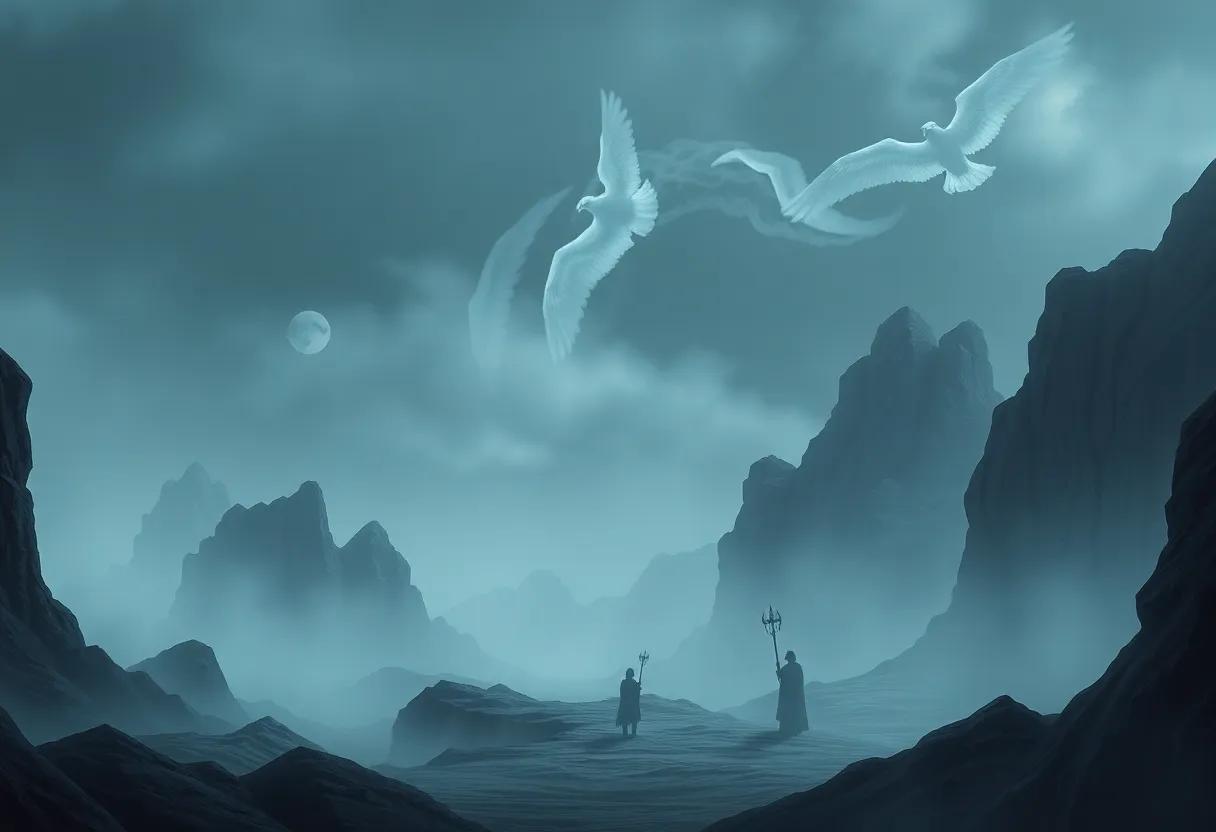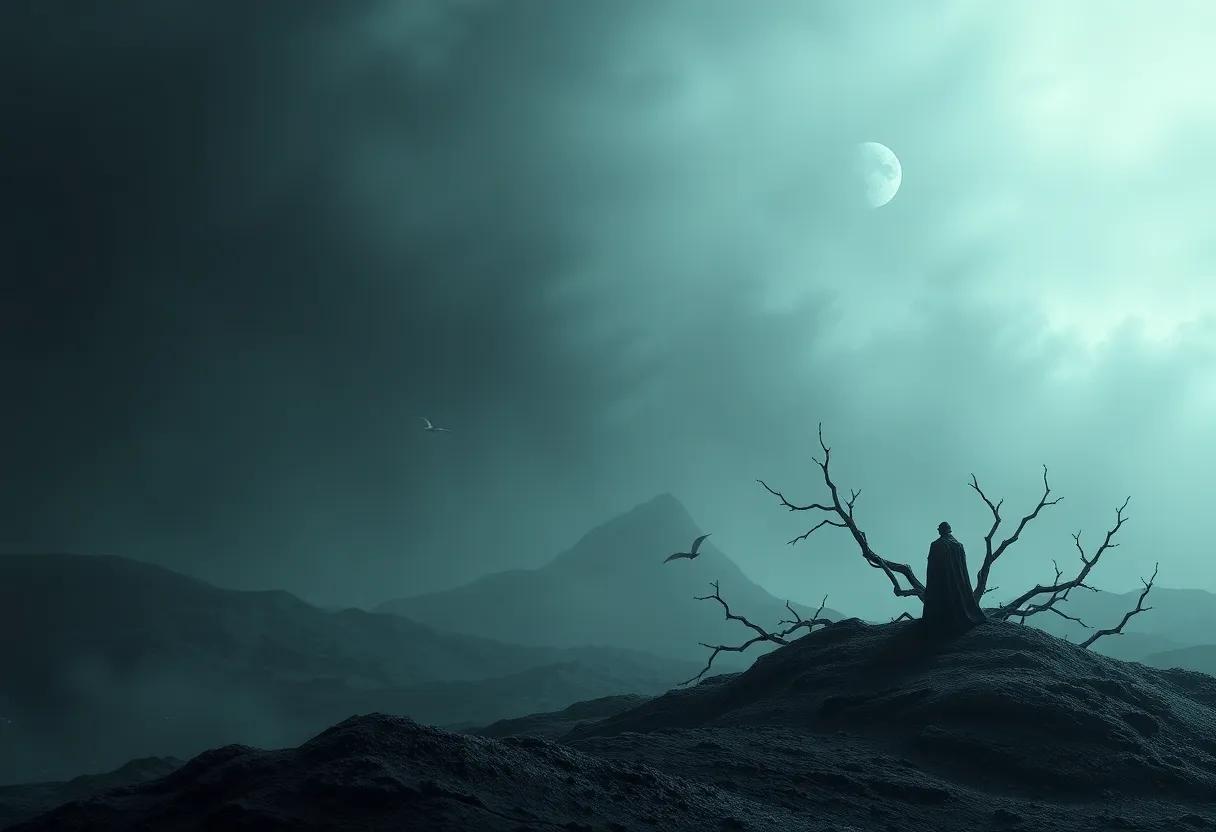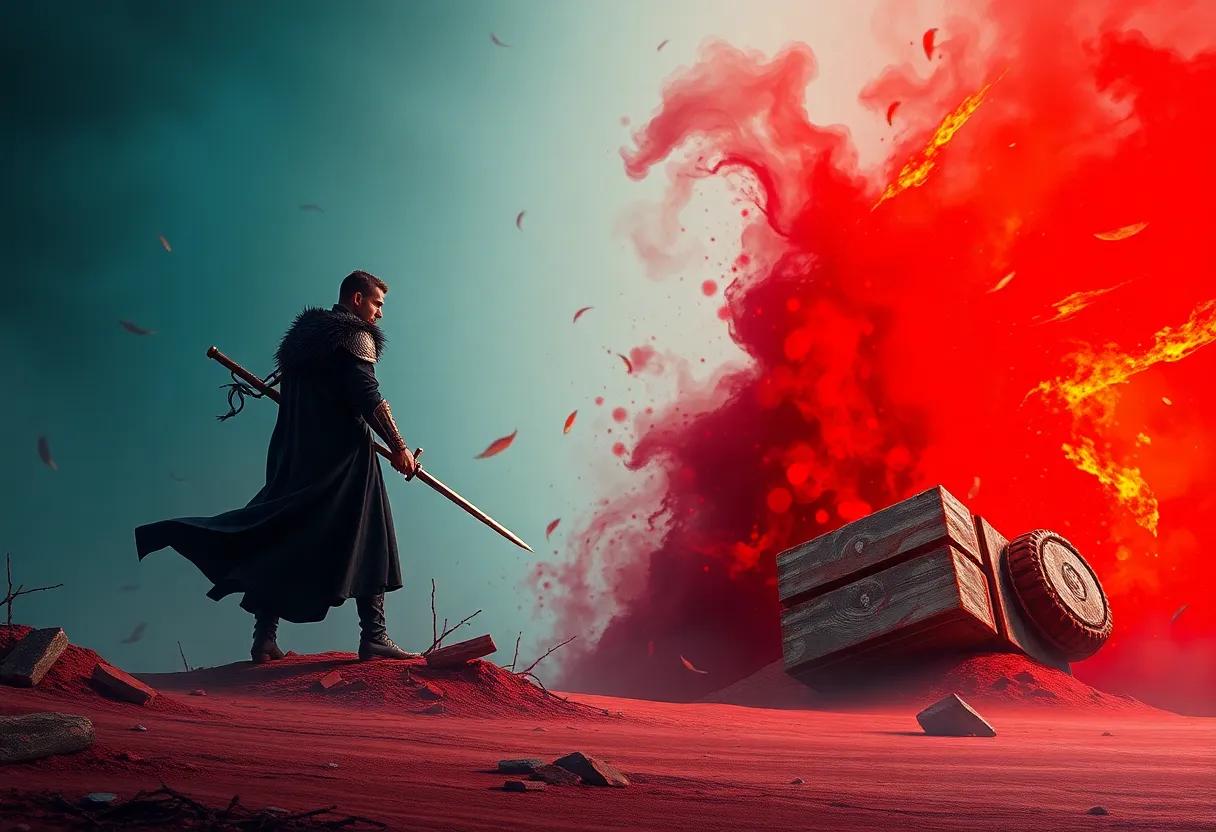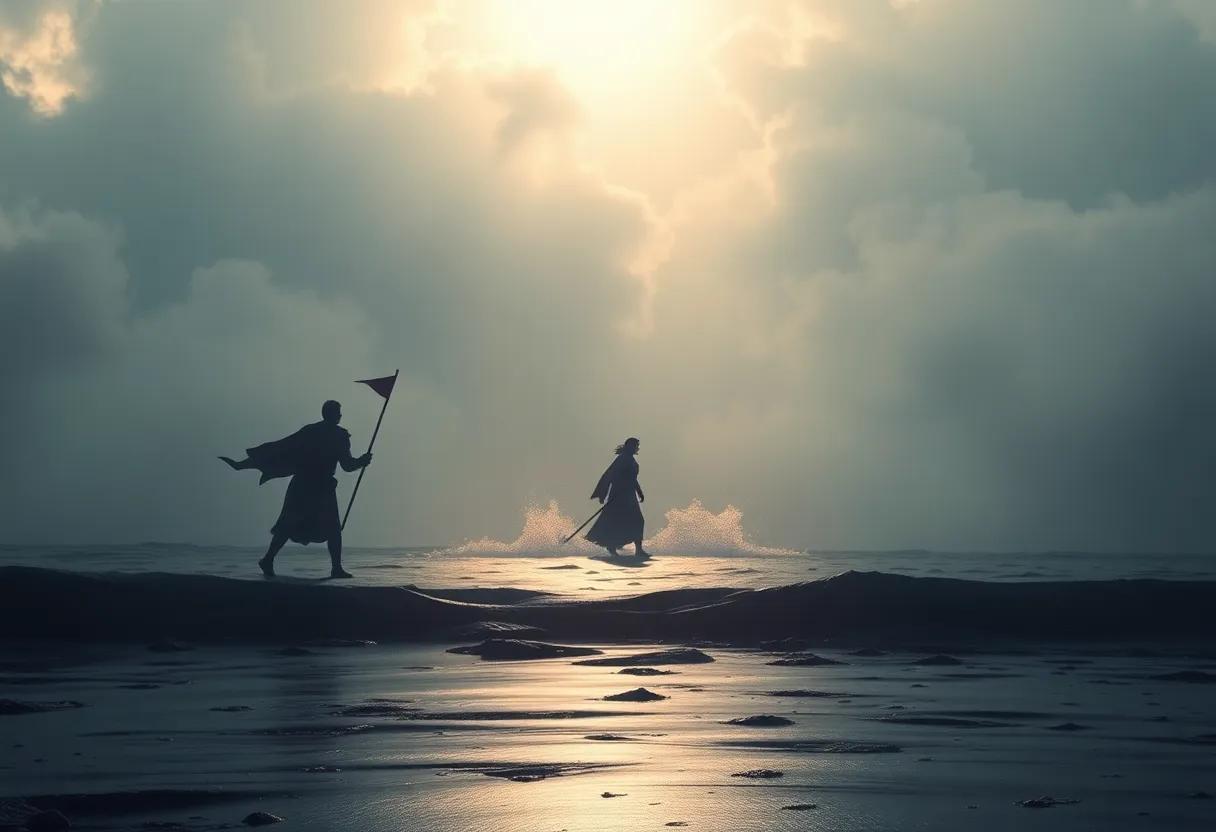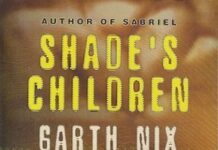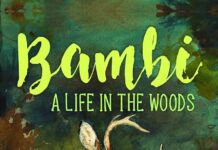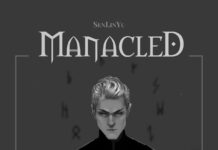in teh sprawling landscape of modern fantasy, few novels manage too balance bleakness with profound depth as deftly as Mark Lawrence’s King of Thorns. As the second installment in the Broken Empire trilogy, this dark and gripping tale continues the harrowing journey of jorg Ancrath, a character as complex as the twisted world he inhabits.Dark Majesty unveiled delves into the layers beneath Lawrence’s vivid prose and brutal storytelling, offering a thoughtful exploration of the themes, character developments, and narrative choices that define this haunting work. this review invites readers to reconsider King of Thorns not just as a grimdark fantasy, but as a nuanced meditation on power, pain, and redemption.
The Intricate Worldbuilding That Shapes the Dark and Gothic Atmosphere of King of Thorns
Lawrence’s world in King of Thorns is not just a backdrop but a living,breathing entity that relentlessly presses upon every decision,every shadowed corridor,and every whispered conspiracy. The fractured kingdom of the Hundred Kingdoms is steeped in decay and violence, where power is wrested through cruelty and cunning rather than honor. This setting brilliantly blurs the lines between decay and majesty, crafting an atmosphere thick with despair yet flickering with ruthless grandeur.The meticulous attention to geography-from the torturous Maze of a fortress city to the bleak,festering villages surrounding it-imbues the narrative with a claustrophobic tension that never suffocates but rather sharpens the reader’s senses to the omnipresent threat lingering in every corner.
- Architecture of Oppression: Stone keeps built to imprison both bodies and spirits.
- Bleeding Landscape: War-ravaged lands that reflect the fractured souls of its inhabitants.
- Relentless Social Hierarchy: Feudal dynamics that underscore cruelty as currency.
- Supernatural undercurrents: Dark magic and curses weave seamlessly into daily survival.
At the heart of this grim tapestry is the interplay between physical habitat and psychological torment. Characters like jorg Ancrath navigate not just brutal external challenges but their own internal labyrinths, their struggles mirrored in the environment’s harshness and gothic decay. the juxtaposition of majestic ruins and abject horror reveals a world where beauty and brutality are irrevocably intertwined, making every setting feel both a prison and a throne. This complex layering ensures that the atmosphere transcends mere aesthetics, positioning the worldbuilding as an integral force that shapes character motivations, moral ambiguity, and the relentless pace of the novel’s dark majesty.
| Element | Effect on Mood | Symbolism |
|---|---|---|
| Ruined Castles | Evokes decay and lost glory | Fragile legacy of fallen kings |
| Murk-Laden Forests | Sense of lurking menace | Hidden dangers and secrets |
| bleeding Wastelands | Atmosphere of despair | Consequences of war and greed |
Exploring the Complex Psychological Landscape of Jorg Ancrath Throughout the Narrative
Jorg Ancrath’s psychological makeup is a labyrinth of contradictions and dark impulses, shaped by trauma and an instinct for survival. His psyche dances on the sharp edge between ruthless pragmatism and a flickering,vulnerable humanity that refuses to be entirely crushed.This duality is reflected in the way he navigates his world: simultaneously a calculating strategist and a deeply scarred boy seeking purpose and control. The narrative deftly peels back layers of anger, grief, and ambition, revealing how each facet of his personality influences his actions and relationships. From moments of cold mercilessness to unexpected flashes of tenderness, Jorg remains a vivid embodiment of internal conflict, challenging readers to grapple with the blurred lines between villainy and victimhood.
The intricate nuances of Jorg’s character can be better understood by examining key psychological themes that recur throughout the story:
- Survival Instinct: Jorg’s relentless fight to outmaneuver his enemies stems from a deeply embedded will to live despite overwhelming odds.
- Emotional Suppression: His stoic exterior often masks a torrent of unresolved pain and vulnerability beneath the surface.
- Power and Control: Obsessed with commanding his destiny, jorg’s thirst for power is less about dominance and more about securing his fractured identity.
These psychological elements intertwine, creating a composite that resists easy categorization. understanding his mental landscape is crucial to appreciating the depth Mark Lawrence imbues in the story, transforming Jorg from a mere antihero to a profoundly complex and relatable figure.
| Psychological Aspect | Manifestation | Impact on Narrative |
|---|---|---|
| Trauma | Isolation & Revenge | Drives key plot decisions and motivations |
| Ambition | Relentless pursuit of power | Shapes alliances and conflicts |
| Empathy | Rare acts of kindness | Humanizes his otherwise harsh persona |
How Political Intrigue and Ruthless Ambition Drive the Story’s Relentless Momentum
At the heart of King of Thorns lies a web of political machinations so intricate that every decision feels like a calculated move on a grand chessboard. Mark Lawrence masterfully constructs a world where alliances are fragile, and trust is a rare currency.The relentless jockeying for power propels the narrative forward,ensuring the stakes escalate with every chapter. Characters are not merely participants but pawns and kings in a brutal struggle for dominance, their ambitions frequently enough cloaked in deception and veiled threats. This ever-present tension creates an atmosphere charged with anticipation, where each revelation and betrayal fuels the story’s inexorable pace.
Ambition in this tale is not an abstract trait but a fierce, driving force that taints nobles and commoners alike. The pursuit of power breeds ruthlessness, manifesting in decisions that shock and captivate readers. Below is a snapshot of key players whose ambitions shape the trajectory of the plot, highlighting the diverse and dangerous motivations that intertwine to sustain the merciless momentum:
| Character | Ambition | Political Role |
|---|---|---|
| Jorg Ancrath | Reclamation of Throne | Reluctant Heir |
| Queen Valka | Dominance Through Diplomacy | Master Negotiator |
| Lord Markus | Expansion of Territory | Warlord |
| High Seer Arden | Manipulation of Prophecy | Advisor & Spy |
The Balance Between Brutal Action Scenes and Reflective Character Development in the Plot
Mark lawrence masterfully weaves a narrative that doesn’t merely rely on relentless violence or fast-paced battles to captivate readers. Rather, he balances moments of brutal action with deeply introspective passages that explore the complexities of Jorg Ancrath’s psyche. This duality creates a rhythm within the story, where scenes of visceral combat are laced with quiet, haunting reflections. these pauses invite readers to ponder not only the consequences of war but also the personal demons that fuel the protagonist’s wrath and ambition. It’s in this delicate interplay that the novel gains its emotional weight, transforming raw action into a vessel for profound character study.
Throughout the plot, Lawrence uses this balance to build tension and empathy simultaneously. The suspense of upcoming skirmishes is heightened by Jorg’s introspective moments, where he wrestles with his identity, morality, and scars from a turbulent past. Consider the following elements that amplify this dynamic:
- Raw brutality that shocks and unsettles but never overshadows the story’s depth
- Quiet introspection serving as counterpoints that deepen character motivations
- Gradual revelations peeling back layers of Jorg’s personality amidst the chaos
- Complex relationships that ground the action in emotional reality
| Scene Type | Purpose | Impact |
|---|---|---|
| Brutal Combat | Demonstrate stakes & power | Heightens adrenaline & realism |
| Reflective Monologue | Reveal internal conflict | Builds empathy & tension |
| Strategic Dialog | Advance plot & character bonds | Enhances complexity & immersion |
Unpacking the Themes of Power, Redemption, and Moral Ambiguity in the Trilogy’s Middle Installment
Within the tangled narrative web of the trilogy’s centerpiece, the interplay of power, redemption, and moral ambiguity is anything but straightforward. Lawrence plunges readers into a world where authority is both a burden and a curse, revealing how the thirst for dominance shapes-and frequently enough shatters-human (and inhuman) connections. Protagonist and antagonist alike are painted in shades of gray, their choices rippling outward to force reflection on what it truly means to lead. The brutal contest for control is less about victory and more about survival, emphasizing that power seldom comes without devastating costs. amid the carnage and political machinations, redemption quietly hums in the background as an elusive concept, sometimes sought, often denied.
This layered exploration leans heavily on illusions and the blurred lines between heroism and villainy. Consider the following elements that define the middle installment’s thematic complexity:
- Power as a multidimensional force: both external rule and internal tyranny.
- Redemption as an ongoing, frequently enough painful process, rather than a neat resolution.
- Moral ambiguity that challenges readers to question allegiance beyond traditional good-versus-evil binaries.
| Theme | Manifestation | Impact |
|---|---|---|
| Power | Warring factions & inner demons | Creates tension, shapes destiny |
| Redemption | Personal sacrifice & regret | Offers hope, deepens character arcs |
| Moral Ambiguity | Shifting alliances & blurred motivations | Keeps readers questioning & engaged |
The Impact of Lawrence’s Lyrical Prose Style on Immersing Readers in a Grim Fantasy Realm
Mark Lawrence’s prose dances on the edge of beauty and brutality, weaving a textured narrative that pulls readers deep into a world where shadows cling to every corner. His lyrical style is not merely decorative; it serves as a visceral conduit for the grimness saturating his fantasy realm. Each sentence carries a weight, balancing poetic imagery with stark realism, allowing readers to feel the chilling winds of the Broken Empire against their skin and see the ash-streaked skies through the protagonist’s weary eyes. This delicate interplay of elegance and grit transforms the story into an immersive experience,where the bleakness is not just seen but profoundly felt.
- Evocative Descriptions: Lawrence’s rich,painterly language paints a world that is both majestic and menacing.
- Rhythmic flow: The cadence of his sentences mirrors the pacing of the narrative, accelerating during moments of tension and slowing to linger in reflection.
- Emotional Resonance: His prose captures the complex psychology of flawed characters wrestling with their dark destinies.
| Prose Element | Effect on Reader | Example |
|---|---|---|
| metaphorical imagery | Engages inventiveness, deepens world-building | “The sky was a bruised wound, leaking dusk.” |
| Concise Brutality | Heightens tension, underscores grim themes | “Blood was the currency of the realm.” |
| Internal Monologue | Creates intimate connection with protagonist | “He thought himself a monarch of ash and ruin.” |
Comparing King of Thorns to Its Prequel and Sequel in Terms of Tone, Pace, and Emotional Depth
King of Thorns carves a distinctive niche between its predecessor and sequel, amplifying the darkness and complexity that define the series. While Prince of Thorns thrusts readers headfirst into ruthless ambition with a sharp,relentless pace,King of Thorns opts for a more measured rhythm,allowing shadows of despair and internal conflict to deepen. the tone shifts from raw, explosive brutality to a nuanced blend of grim determination and vulnerable fragmentation, inviting readers to witness Jorg’s struggle not just against external foes, but the torment within. This tonal evolution breathes new life into the narrative without sacrificing the grim atmosphere that fans cherish.
Emotionally, the trilogy’s middle volume pushes boundaries by broadening the emotional palette. The fast-paced drive of the prequel gives way to moments of introspective quietude and harrowing loss,which lend a heavier emotional weight. Meanwhile,compared to the sequel’s expansive and often epic scope,King of Thorns feels intimate,zooming into the fractured soul of its protagonist. Below is a simple comparison highlighting these shifts:
| Aspect | Prince of Thorns | King of thorns | Empire of thorns |
|---|---|---|---|
| Tone | Raw, brutal, unyielding | Dark, introspective, brooding | Epic, expansive, reflective |
| Pace | Fast and relentless | Measured, deliberate | Varied, sweeping |
| Emotional Depth | Fierce ambition, anger | Vulnerability, loss, inner turmoil | Reckoning, redemption, growth |
- Prequel: Introduces raw ferocity and unchecked ambition.
- King of Thorns: Expands emotional complexity, focusing on internal battles.
- Sequel: Resolves growth with broader stakes and emotional reconciliation.
Why the Novel Challenges Traditional Fantasy Tropes Through Its Antihero and Dark Narrative
In a genre frequently enough dominated by clear-cut heroes and sweeping quests of light conquering darkness, this novel carves out a decidedly murkier path. The protagonist emerges as a complex antihero, weaving through moral ambiguity rather than embodying traditional valor. Instead of the archetypal noble savior, the story immerses us in a world where ambition, brutality, and survival blur the lines between right and wrong. This approach challenges readers to reevaluate their expectations of heroism, inviting a deeper exploration of flawed, yet compelling, character motivations.
The dark narrative structure not only subverts but deconstructs familiar fantasy tropes through key elements such as:
- Grim realism: Magic and power are double-edged, rarely offering simple solutions.
- Shadowy alliances: Trust is fleeting and alliances shift like sand, reflecting true political complexity.
- Unforgiving consequences: Choices weigh heavily, with redemption often elusive or costly.
This creates a haunting atmosphere where traditional notions of good vs. evil dissolve into a gritty portrayal of ambition and consequence, setting it apart as a bold commentary on what fantasy can achieve.
| Traditional Trope | Novel’s Interpretation |
|---|---|
| The Hero’s Journey | A dark pilgrimage marred by moral compromise |
| Good vs. Evil | Blurred lines with complex motivations |
| The Chosen One | Reluctant antihero shaped by violence and survival |
Specific Recommendations for Readers Who Appreciate Grimdark Fantasy and Complex Antiheroes
For those enticed by the shadows of grimdark fantasy,King of Thorns offers a darkly intricate landscape where morality is a shifting,unreliable compass. readers who revel in morally complex antiheroes will find Jorg Ancrath a compelling study in contradiction-both ruthless and vulnerable, a ruler bent by circumstance yet fiercely determined to carve his own path. This novel refuses to comfort with clear-cut heroes or villains; instead, it invites you to dwell in the gray, exploring themes of power, ambition, and the brutal cost of survival through a protagonist who is as flawed as he is fascinating.
To deepen your experience with similar narratives, consider these titles that echo the brutal beauty and layered protagonists found in Lawrence’s work:
- Joe Abercrombie’s “The First Law” Trilogy – Embracing grim realism with dark humor and deeply flawed heroes.
- scott Lynch’s “Gentleman bastard” Series – Featuring cunning antiheroes navigating an unpredictable world.
- Glen Cook’s “The Black Company” – Chronicling mercenaries bound by complicated loyalties and survival instincts.
| Aspect | why It Resonates |
|---|---|
| Complex Protagonists | Heroes with moral ambiguity that challenge traditional archetypes. |
| Brutal Realism | Uncompromising depictions of violence and political intrigue. |
| Unpredictable Worlds | Settings rife with danger where trust is scarce and alliances fragile. |
How Supporting Characters Enrich the Story and Complement Jorg’s Turbulent Journey
Mark Lawrence’s intricate portrayal of Jorg Ancrath’s journey is substantially deepened by a cast of supporting characters who serve as more than mere side players. Each character reflects a different facet of Jorg’s tumultuous psyche and broader world, creating a tapestry of relationships that challenge, provoke, and sometimes betray him. From the cunning and often ruthless characters like Sir Makin to the enigmatic and steadfast Snorri ver snagason, these figures introduce sharp contrasts and moral complexities that illuminate Jorg’s evolving nature. Their interactions are not only pivotal to advancing the plot but also enrich the narrative by providing context and consequence to Jorg’s frequently enough brutal decisions.
The dynamics between Jorg and his allies and adversaries reveal a delicate balance of power, loyalty, and survival instincts that underscore the novel’s darker themes. Supporting characters often act as mirrors or foils, highlighting Jorg’s internal conflicts and, at times, his rare moments of vulnerability and humanity. Consider this concise overview of key characters and their narrative roles:
| Character | Role | contribution to Jorg’s Journey |
|---|---|---|
| Sir Makin | Rival Commander | Tests Jorg’s ruthlessness and strategy |
| Snorri ver Snagason | Trusted Friend | Offers loyalty and a rare emotional anchor |
| Crown prince | Political Opponent | Challenges Jorg’s claim and leadership |
| Red Queen | Ally and Co-conspirator | Complicates alliances with shifting motives |
The Use of Vivid Imagery and Symbolism to Enhance the Story’s Emotional and Thematic Layers
Mark Lawrence masterfully paints his bleak world with strokes of vivid imagery that breathe life into his characters’ internal turmoil and the harsh landscapes they traverse. The stark contrast between the beauty of decaying kingdoms and the grotesque horrors lurking beneath creates a visceral experience for readers. Through lush descriptive passages, the novel evokes sensations that linger-such as the biting cold that mirrors the protagonist’s emotional isolation or the eerie silence that foreshadows devastating betrayal. This sensory immersion deepens the emotional impact, making every triumph feel hard-won and every loss gut-wrenching.
Symbolism weaves its way through the narrative like a dark undercurrent, reinforcing key themes without ever feeling forced. For instance, the recurring motif of thorns not only reflects physical pain and protection but also embodies the protagonist’s tangled path of growth and suffering. Similarly, the fragmented crown symbolizes fractured authority and the heavy cost of power. These symbols align seamlessly with the story’s exploration of ambition, sacrifice, and identity, enriching the text with layers that invite repeated reflection.
| Imagery Element | Symbolic Meaning | Emotional Effect |
|---|---|---|
| Withered landscapes | Decay and lost glory | Melancholy and doom |
| Bloodied thorns | Pain and resilience | Struggle and defiance |
| Shattered crown | Fractured power | Ambiguity and tension |
Reflecting on the Novel’s Ending and Its Foreshadowing Role in the Series Continuation
The conclusion of King of Thorns serves as both a cathartic release and a carefully laid groundwork for the series’ unfolding complexity. Lawrence masterfully ties loose narrative threads while simultaneously planting cryptic clues that hint at the dark evolution of his characters and the world they inhabit. The subtle revelations about Jorg’s psyche and the shifting political landscape resonate beyond the final pages, echoing the author’s penchant for blending grim realism with mythic undertones. This layered ending challenges readers to reconsider earlier plot points through a new lens, transforming past events into seeds of unavoidable turmoil and transformation.
Several critical elements showcase this deliberate foreshadowing, notable in how everyday interactions and seemingly minor events gain weight retrospectively. Consider the following narrative clues that hint at forthcoming developments:
- Jorg’s internal conflicts reveal a fragile balance between his ruthless ambition and vulnerable humanity.
- Political alliances are portrayed with subtle fractures,suggesting destabilization ahead.
- Mythical artifacts and legends introduced here become central symbols in the saga’s deeper mythos.
| Foreshadowing Element | Implication | Symbolic Weight |
|---|---|---|
| Wounded King Imagery | Jorg’s unseen vulnerabilities | Fragility behind power |
| Shadowy Political Moves | Imminent betrayal and chaos | Decay of order |
| Enigmatic Prophecies | Guide narrative arcs in sequels | Destiny vs free will |
in essence, the ending does not just conclude a chapter but gestates the swirling storm of moral ambiguity and escalating conflict that defines the rest of the series.It compels readers to remain vigilant for the symbols and subtexts that Mark lawrence expertly weaves, encapsulating the essence of a tale where every shadow hides a prophecy and every victory bears a price.
Mark Lawrence The Creative Mind Behind the Stark and Unyielding World of King of Thorns
Mark Lawrence’s brilliance lies in his ability to construct a world that is as unforgiving as it is enthralling. king of thorns thrives on its raw depiction of a reality where power is brutal, and survival is a constant negotiation with darkness. Lawrence crafts characters who are deeply flawed, yet impossibly compelling, embedding his narrative with a stark realism that refuses to sugarcoat the cruelty of his dystopian landscape.This uncompromising vision challenges readers to embrace moral ambiguity, making the journey through the shattered remnants of the Broken Empire both a psychological and emotional odyssey.
At the heart of this dark tapestry is a masterful layering of themes and motifs that enrich the story’s grim atmosphere.From the relentless pursuit of vengeance to the fragile nature of loyalty, the novel explores complex human impulses beneath its harrowing surface.The following elements underscore Lawrence’s creative prowess:
- The Psychological Depth: Characters are not mere archetypes but living, breathing entities shaped by trauma and ambition.
- Unyielding World-Building: Every ruin, battlefield, and fortress vibrates with a palpable history of suffering and conquest.
- Subtle Symbolism: Imagery that resonates beyond the immediate plot, inviting reflection on power, mortality, and identity.
- Complex Narrative Structure: Non-linear storytelling that mirrors the protagonist’s fractured reality and fragmented memory.
| Creative Aspect | Impact on Story |
|---|---|
| Dark Protagonist | Drives tension through moral conflict |
| Brutal Setting | Enhances immersion with vivid, harsh realities |
| Symbolic imagery | Layers narrative with philosophical depth |
As the shadows of “King of Thorns” gradually recede, what remains is a story that challenges and provokes, leaving readers to wrestle with its darkness long after the final page is turned. Mark Lawrence’s masterful weaving of grit and grace ensures that this is not merely a tale of power and pain,but a complex portrait of humanity beneath the crown. Whether you find yourself enchanted or unsettled, “Dark Majesty Unveiled” reminds us that in the realm of fantasy, the truest kings often wear the heaviest thorns.

